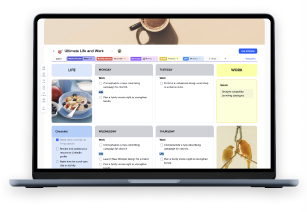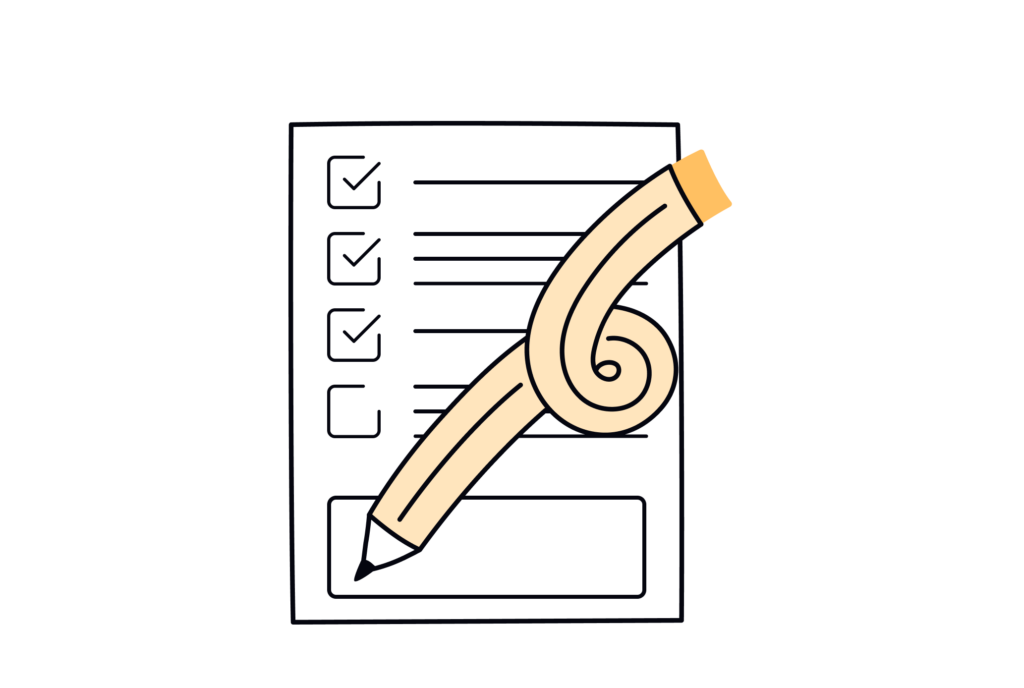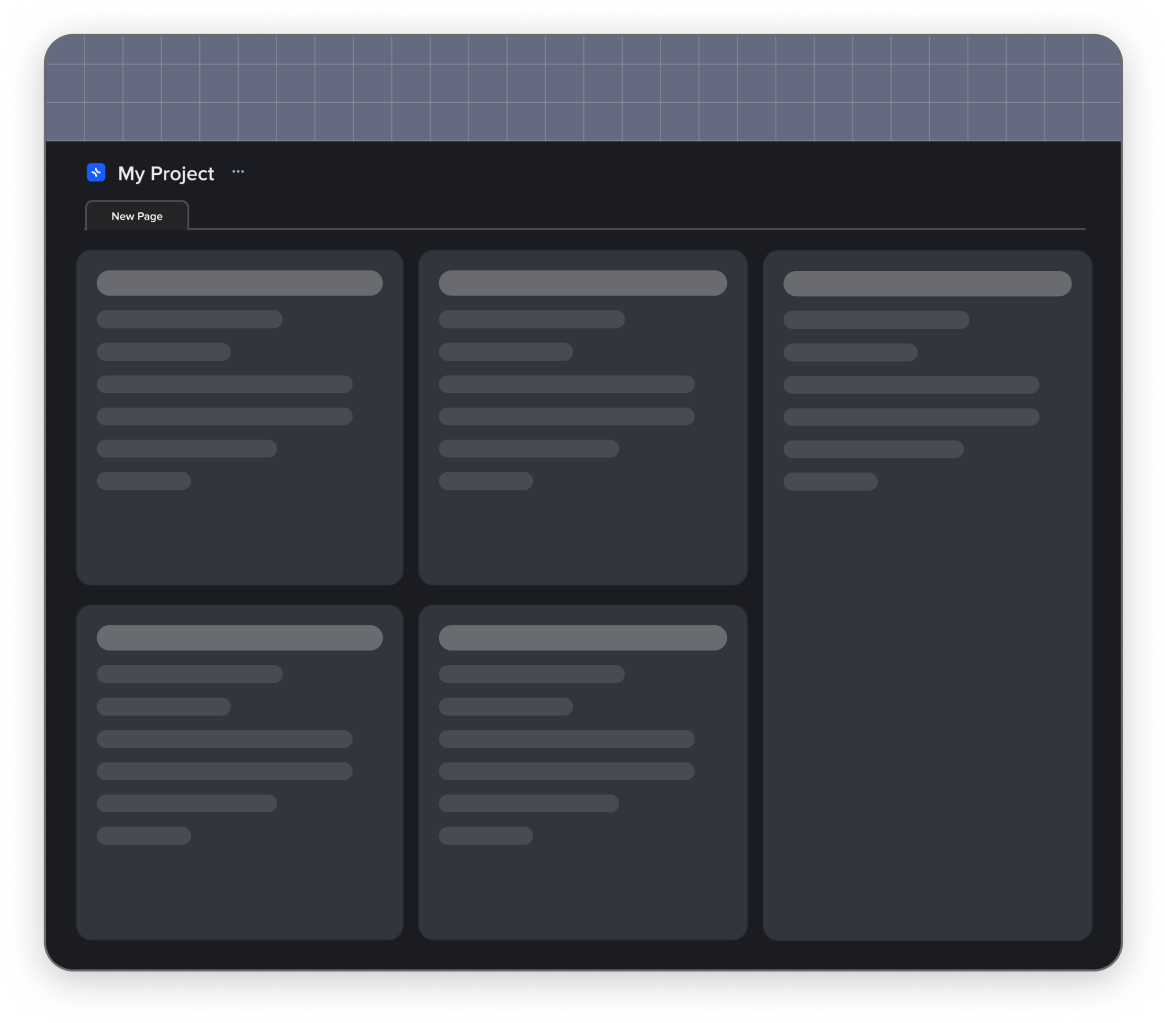Do you ever get to the end of your day and, looking back over the day, you ask yourself, “What did I get done today?” People often have difficulty keeping tabs on what must be done, especially if they are working on multiple projects or in a high-pressure workplace. The best way to keep track of your goals, as well as keep you on track, is through the use of a daily log. A daily log isn’t just a list of tasks you have to accomplish by the end of the day, it is a tool for monitoring the work, evaluating one’s actions, and defining potential mistakes. Whether it is for handling your personal activities or for supervising your group, a well-maintained log serves to improve organization, responsibility, and efficiency.
In this article, you will learn how to make a daily log appropriate for your work and personal schedule. Ready to change the way you run your day? Master the art of daily logging together with xTiles app.
What is a Daily Log?
A daily log, therefore, is an easy and effective way of documenting your daily plan, activities, incidences, or schedules. At the same time, it is a working plan that allows not only monitoring the progress but also pinpointing the successes in work/school achievements and staying on top of the organizational aspect of tasks. Whether it’s to track personal goals or work responsibilities, having a daily log lets you see what tasks need to be accomplished, when the tasks have to be completed, and an overview of what has been done.
In the corporate world, there can be project, construction daily log, or work logs at the workplace to help the company keep track of activities day to day and also guarantee that no job escapes their notice. For personal needs, daily logs provide one of the effective ways of tracking productivity, setting new priorities, and staying focused all through the day.
According to the famous philosopher Seneca, “Every day, I count as a separate life.” This notion emphasizes the need to be conscious about how you spend your time. In this way, keeping a daily log helps to get the best out of a day, develop some time management skills, and assess your progress.
Finally, a daily log serves not only the purpose of an accountability tool but also helps to reflect the progress. This way, you remain aware of your activities and, therefore, stand a better chance of making better decisions on how to proceed.
Setting Up Your Daily Log
Creating your daily log is easier and can be adjusted according to personal or business requirements. Here’s how to make a daily log:
1. Choose your daily log template: Decide if you’d like to use print, notebook, or one of the digital tools, such as the xTiles app, with a comprehensive interface and customizable design. The main advantage of these tools is that they make tracking your daily logs easy and comfy.
2. Prepare in advance: Create your daily log either in the morning before you begin your work or in the evening before you go to bed. This makes you to be well-prepped and psychologically set for your upcoming daily tasks.
3. Include Key Information: Be sure to keep all the relevant information in your notes, including the log’s date, tasks for the day, any upcoming meetings and assignments, and notes to keep other observations in one place.
4. Customize Your Log: If you are using any ready template and it does not fully suit your preferences, always make changes to enhance your daily logging. For example, the xTiles templates are all about personal approach and customization. You might include checklists for tasks that have been done, use colored markings to indicate certain levels of importance, or crate tiles for writing reflections by the end of the day.
Organizing your daily log effectively will help you become more ordered, concerned, and encouraged about your progress.
Prioritizing Daily Tasks
The best way to manage your time is to keep a schedule of tasks in order of importance so that you can get to the most important tasks first. Here’s how to effectively prioritize in your daily log:
- Write Down Everything: Every morning, begin with writing all tasks, events, and notes that occur to your mind in the note-taking log. This can be so helpful as it helps you take full records and can be of help to you than forgetting some of the details. Jot down everything, no matter how insignificant it may appear initially, because it may reveal additional trends as time goes on.
- Identify Key Tasks: After you have written down your tasks, highlight the key ones—those linked to your goals or deadlines. These should be your priority for the day.
- Break Down Large Tasks: When it comes to large-scale projects, divide work into action steps or steps where critical tasks can be completed. Instead of putting a brief like “finish project report,” write down the following: research data, writing the introduction, and creating charts.
- Allocate Time Slots: Schedule part of the day for all the tasks so that they will be accomplished. It serves as a structure and eradicates procrastination. Use specific time frames, e.g., “9:00–10:00 AM: Write an e-mail to the client” instead of “Write the e-mail.”
- Include Relevant Details: Include relevant details such as work hours, tasks completed, and any challenges or obstacles faced. This enables you to be on your toes and keep track of your work as well as time.
- Reflect and Improve: At the end of the day, you should check this log: What went well? What potentials for doing things differently were there? Make an effort to apply these observations as guidelines for managing tasks the next day you are assigned to work.
Organizing your activities properly will reduce clutter, leaving you adequately prepared and ready to control the chaos and achieve the most.
Tips for Staying on Track
It can be difficult to maintain the wanted daily logging, but with a few helpful habits and techniques, it becomes entirely easy. Here are some practical tips to help you stay on course:
Make Daily Logging a Habit
For efficiency, incorporate your logging into your current regular activities. Try to write in it at a certain time of the day, such as in the morning or before going to bed. It should be done in the same way as brushing your teeth, taking a meal, or any activity you perhaps cannot afford to ignore during the day.
Use Reminders or Notifications
Schedule an alarm for each deadline on your mobile phone or desktop. All these gentle prods shall be helpful reminders, especially in the course of the day when things can get overwhelming. These reminders can be created using the calendar app or the tools for managing tasks so that you won’t forget about your log entry.
Review Your Daily Log Regularly
It is very important to look at your log not just to tick off things on your list the whole process but, more importantly, to help you realize patterns. Expend a little time every week to review what you have written and search for trends that may indicate that a change is needed. This will help you remain focused and alert to your objectives.
Adjust Your Log Template as Needed
So, if you discover that your chosen logging system is not suitable for you, do not hesitate to make some changes. By making adjustments as needed to the categories, adding details, or even changing tools, you will remain focused and productive.
Therefore, by implementing the above-mentioned tips, logging will be much easier to do and incorporated into the daily routine.
Overcoming Common Challenges
It is easy to get out of track when managing the daily logging, and this may be caused by procrastination, distraction, and lack of enthusiasm. Thankfully, there are tips for dealing with these issues as they arise and ways to make the process smoother.
Overcome Procrastination: One of the major challenges includes procrastination, especially if a task seems to be mammoth. Besides, to avoid procrastination, divide large assignments into smaller portions that can be tackled at a certain time. Avoid the pressure of finishing the day’s log; log it in segments, one entry at a time, or even by section. This makes it feel less protruding and enables more progression to be accomplished.
Manage Distractions: Distractions are easy to come by in today’s society, with so much going on around us all the time. To avoid being distracted, there should be assigned times within the day to log cases and avoid frequent interruptions during this time. Silence all the alerts, make sure the phone is on ‘DND’ mode, and ensure no form of distractions will come your way. By creating a schedule and dedicating a certain time of the day for this activity, it will prove easier to remain focused.
Stay Motivated: Staying motivated is often difficult, particularly when you only have the feeling that you are getting no results. To keep going, it is crucial to be aware of some important milestones along the way. It doesn’t matter if you’re done with a whole week or your meter hit a thousand words, always have something to look forward to — whether that’s a rest, a snack, or free time.
Use Your Daily Log to Identify Challenges: Your daily log itself can serve as an effective way of assessing challenges at the workplace. Check how often you record specific difficulties or tasks that prove to be problematic for you. In this way, you can modify your plan and find ways to address problems before they turn into challenges.
Maximizing Productivity with Your Daily Log
When properly executed, a daily log serves as a significant means of increasing one’s productivity. Therefore, if you follow your to-do list, record your daily activities, and frequently revise your organizational plan, you are likely to achieve more within a shorter period of time. Here’s how to make the most of your daily log:
Prioritize Tasks and Manage Time Effectively: You should document your daily activities in order to have a clear list of tasks as well as their priority. Before getting to work, write down the must-import things (MITs) and do them first. Part down projects that are big and complex into workable sections and assign certain time periods on the calendar for the same. This avoids confusion and gives you a point of direction when performing your duties.
Eliminate Time-Consuming Activities: Learn how to delegate and get rid of those duties that you consider unimportant or the ones that take a lot of your time. Jot down your time usage on a daily basis and determine which of your tasks can be made more efficient or eliminated altogether. Ensure that tasks include only critical and meaningful activities that help to progress toward goals.
Track Progress and Stay Motivated: It also can serve as a to-do list, and if you write down what you are going to do, then by the end of the day, at least you know how much you have progressed. It is good to always take time and think through the things you’ve succeeded at, no matter how little they are, so as to stay motivated. Reference your log to notice them with completed tasks and milestones; this gives you a positive feeling that motivates you to move to the next step.
Review and Adjust Regularly: It is also important to constantly revise your daily log system and make alterations for optimal organizational performance. If you realize some methods or templates you are using may not be effective, then modify them for effectiveness. Reflection helps you avoid getting off track, disorganized, inflexible, and lacking direction or focus in your work.
With these strategies in tow, your daily log is no longer simply a documentation of what needs to be done but a way of increasing efficiency and getting things done.
Conclusion
In conclusion, a daily log is an effective tool for tracking progress, reflecting on your experiences, and achieving both personal and professional goals. By following the tips and techniques outlined, you can create a system that not only helps you stay organized and focused but also drives productivity and personal growth. The key is consistency—make logging a daily habit, prioritize your tasks, and regularly review your entries to adjust your approach as needed. This ensures that your log remains a valuable tool for reflection and improvement. To make the process even smoother, consider using xTiles, an innovative app designed to help you organize your daily tasks, visualize progress, and stay on top of your goals. With our user-friendly interface and customizable features, xTiles makes tracking your journey easier and more effective. Start using xTiles today and elevate your productivity to new heights!

FAQ
What is a daily log?
A daily log is a document where an individual records the tasks, activities, goals, and reflectiveness of the day. It allows navigation or tracking of the work done, the means by which work is done, and trends that may emerge with time.
What to put in a daily log?
Integrate your to-do list, major achievements, issues, ideas, and consideration or reflection. You can also log your habits, your mood, and anything you have learned throughout the day.
How do you write a daily log?
You should write your log in the list with tasks and completion times, as well as the intentions and outcomes of your work. List all your challenges and accomplishments and then plan for the next day’s needs accordingly.
Can I use a daily log for free?
Yes, many daily log apps and tools, including the basic subscription of the xTiles app, provide free plans, help to log tasks, track progress, and be organized. Still, you can leverage more enhanced features like tools integration and access to advanced features and improve your progress with the xTiles Pro Plan.








